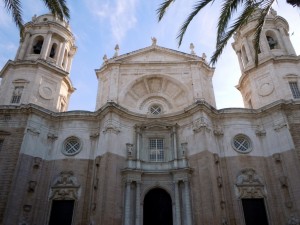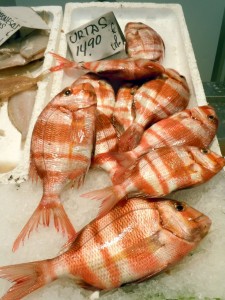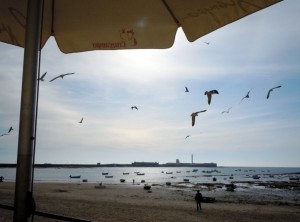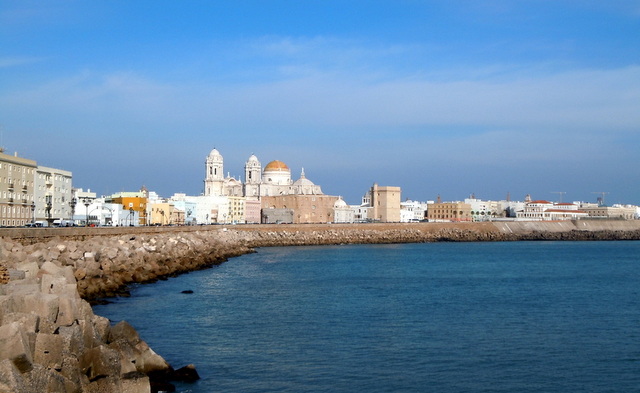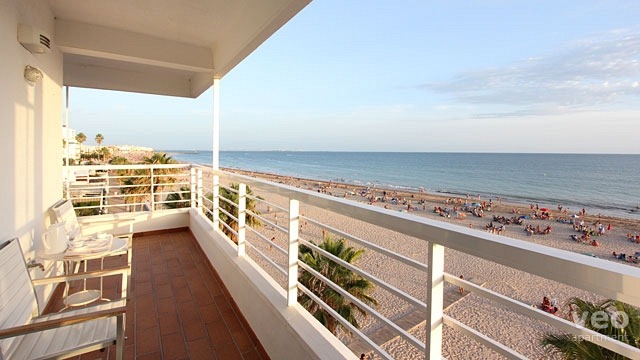
Over the last few years veoapartment has established a reputation as one of the leading holiday rental apartment providers for the major cities of Andalucia – Seville, Granada and Malaga. But now, for the first time, we are offering a superb beach front apartment for that perfect seaside holiday.
The Virgen del Mar Apartment is a fully equipped holiday home right on the beach in the resort town of Rota. With two bedrooms and two bathrooms it will accommodate four people in comfort. A large living-dining area with big picture windows that let in lots of light faces the beach, as does the L-shaped terrace, where you can enjoy a meal or a drink al fresco, or just enjoy the view across the bay to the ancient seaport of Cádiz.
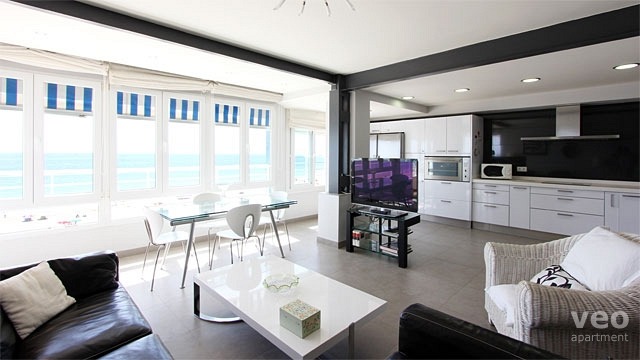 enjoy sea views from the comfort of the spacious living room
enjoy sea views from the comfort of the spacious living room
Although Rota is primarily a seaside resort, famous for its long stretches of sandy beach, its history goes back to Phoenician times, and something of that past can still be experienced in Rota’s old town. The mediaeval Castillo de Luna (Castle of the Moon), which is now the town hall and tourist information office, is well worth a visit, as are a number of religious buildings, particularly the parish church of Nuestra Señora de la Expectación, the church of San Roque and the tower of the Convent of Merced (though the convent itself no longer exists). There’s a local museum, the Fundación Alcalde Zoilo Ruiz-Matos, and a botanical garden. Spend some time at the old Pesquero Astaroth fish market, and sample some of the local delicacies, such as Urta de la Roteña or Arranque Roteña (fish dishes made with freshly caught local fish), and the local red wine La Tintilla de Rota. For something more unusual the artificial fishing ponds of Los Corrales or the Bucarito pig and goat farm.
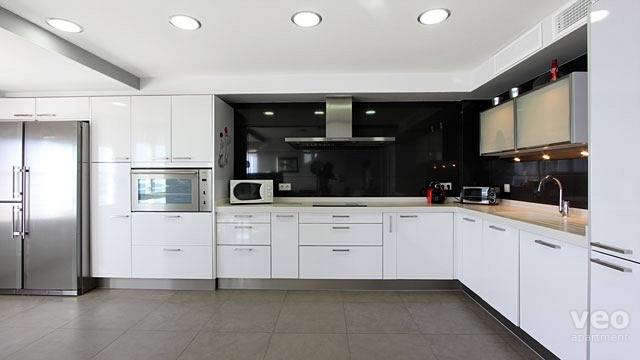 fully-equipped kitchen to prepare your market purchases
fully-equipped kitchen to prepare your market purchases
Rota also makes a great base for visiting other nearby towns and attractions. The three sherry towns of Jerez, Puerta de Santa Maria and Sanlúcar de Barrameda are all close by, and for anyone interested in wines a visit to at least one of the bodegas is an absolute must. They are fascinating places, full of the aromas of sherry and the sherry making tradition. All three towns have picturesque old centres where you can get lost in the winding streets and little squares. It’s also possible to take a catamaran ferry to Cádiz, and spend a day in this fascinating old city. My favourite places are the market, with its spectacular display of fresh fish, the old fortifications and the botanical gardens, though there’s lots more. Be sure to grab a coffee or a drink in the Cafe Royalty in Plaza Candelaria.
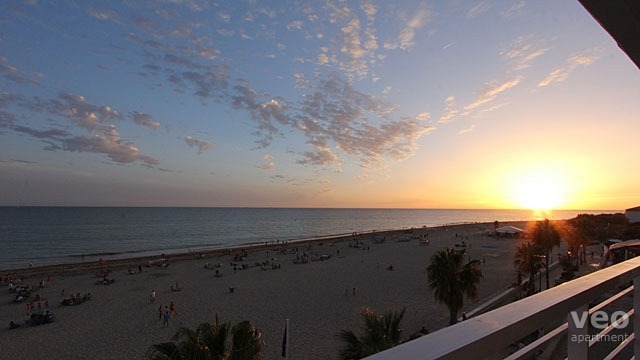
On the other side of the River Guadalquivir from Sanlucar is the famous Doñana National Park, the oldest national park in Europe, and an area of great natural beauty with its sand dunes, lagoons and woods. Also nearby is the Cadiz bay nature reserve, an area of wetlands in the inner part of the Bay of Cadiz, a fascinating though rather desolate landscape of marshes and abandoned salt pans.
All in all, our Virgen del Mar apartment is a great location in any season to enjoy this very lively part of the the Costa de la Luz (coast of light).
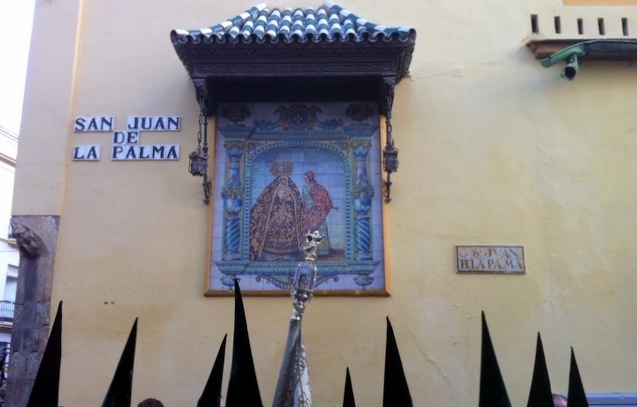 the Macarena procession in Seville
the Macarena procession in Seville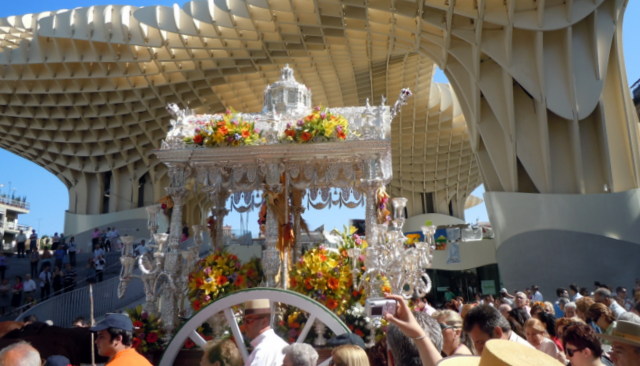 the Seville brotherhood leaving for El Rocio
the Seville brotherhood leaving for El Rocio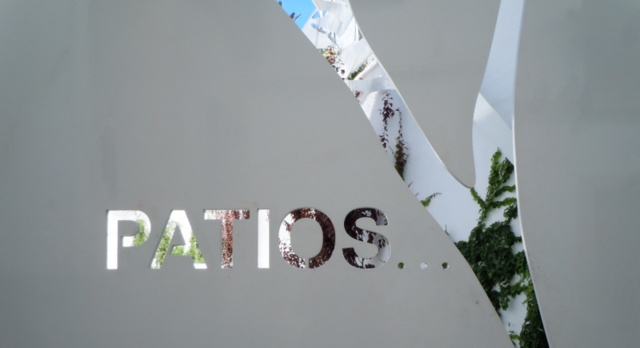 the Patios of Cordoba
the Patios of Cordoba